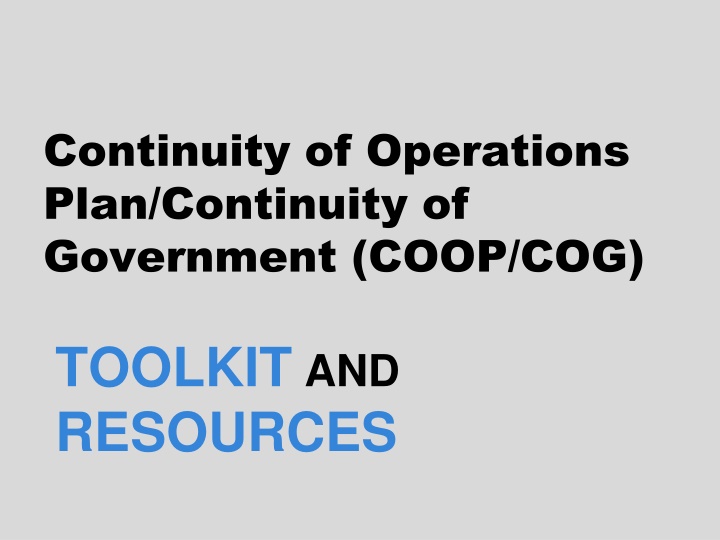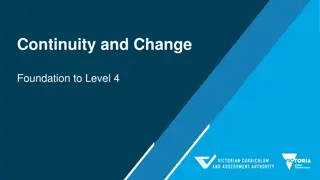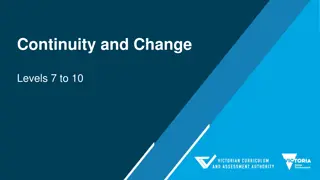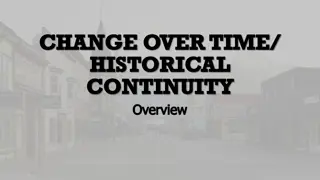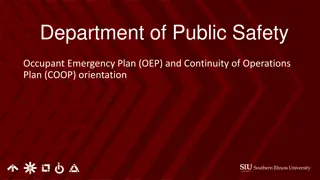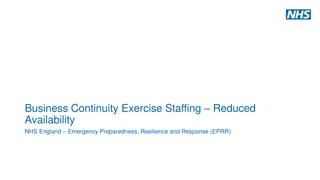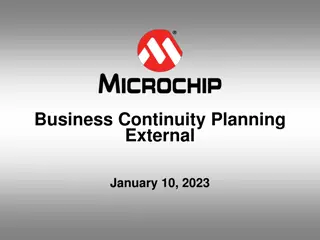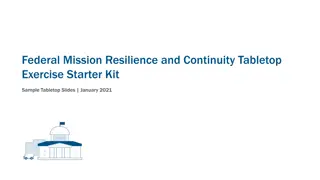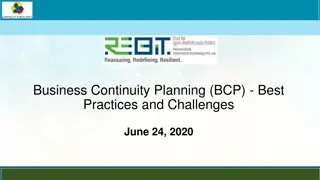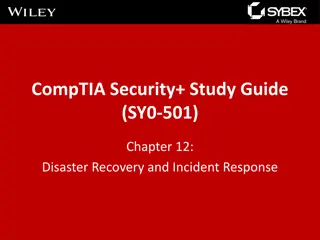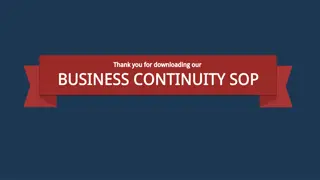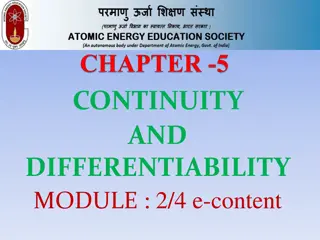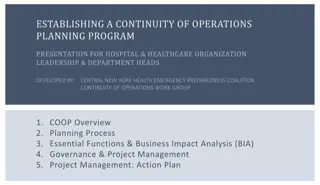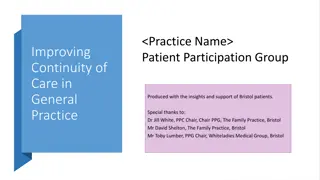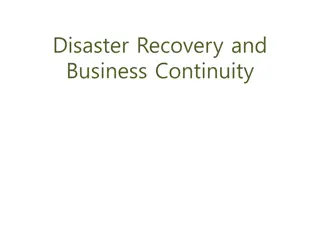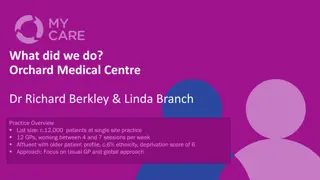Ensuring Continuity of Operations and Government: A Comprehensive Approach
Continuity of Operations and Government (COOP/COG) is essential for maintaining the continuity of essential functions in all circumstances that may disrupt normal operations. This toolkit provides insights into the purpose, importance, and steps involved in implementing effective COOP/COG strategies, emphasizing factors like anticipation of threats, adapting to changes, and enhancing operational performance.
Download Presentation

Please find below an Image/Link to download the presentation.
The content on the website is provided AS IS for your information and personal use only. It may not be sold, licensed, or shared on other websites without obtaining consent from the author.If you encounter any issues during the download, it is possible that the publisher has removed the file from their server.
You are allowed to download the files provided on this website for personal or commercial use, subject to the condition that they are used lawfully. All files are the property of their respective owners.
The content on the website is provided AS IS for your information and personal use only. It may not be sold, licensed, or shared on other websites without obtaining consent from the author.
E N D
Presentation Transcript
Continuity of Operations Plan/Continuity of Government (COOP/COG) TOOLKIT AND RESOURCES
What is COOP/COG Continuity of Operations (COOP) Continuity of Government (COG)
The overall purpose of both Continuity of Operations and Continuity of Government is to ensure the continuity of essential functions under all circumstances that may disrupt normal operations. As a baseline of preparedness for the full range of potential emergencies, all governments/agencies should have in place viable Continuity of Government and Continuity of Operations capabilities.
Why do this? Anticipate threats Adapt to sudden changes Increase operational performance Determine the vital resources Improve communication
Weakest Link 34.51% People risk 26.65% Process risk 18.62% Technology risk 8.35% Supply chain partner risk 6.74% Collaboration with private industries 5.14% Data risk Findings from the March/April issue 2006 Continuity Insights/KPMG Business Continuity Benchmarking Study (article out of Continuity insights) Study included surveys from 935 businesses in the US.
COOP/COG is a process, not a project COOP/COG is a multi-disciplinary effort COOP/COG is NOT a one-person event Plans should be actionable, not informational The plan is a living document and is a continuous cycle
Leadership and Commitment Commitment to the program to prevent, mitigate the consequences or, prepare for, respond to, maintain continuity during, and recover from incidents. -From NFPA 1600 Standard on Disaster/Emergency Management and Business Continuity Programs (2013 Edition)
Steps Steps Overview to BOS Communication with Elected Officials and Department Heads Month 1 Program Committee Meeting (Initial) Review goals of COOP/COG Timeframe Expectations Month 2 Month 3 - 6 Data Gathering Identify Hazards and Vulnerability Assessments Compilation of data gathering Month 7 - 8 Program Committee Meetings reviewing draft documents Month 9 - 10 Month 11 - 13 BOS Discussions and Plan Adoption
Planning Process After commitment to undertake the Plan is established, process begins with establishment of the Program Committee
Program Committee Provides input and/or assists in the coordination of the preparation, development, implementation, evaluation, and maintenance of the program. Appointed by Elected Officials-Department Heads Individual should have direct access to EO/DH; have authority to direct work of those within office/department.
Planning Risk Assessment Business Impact Analysis Hazards identification Vulnerability assessments Evaluation of existing mitigation strategies Resource Needs Assessment Agreements Evaluates the potential impact that results from interruption or disruption of functions, processes, and applications. Foundation of recovery strategies Human resources, equipment, facilities, training, funding, expert knowledge, materials, technology, information, intelligence, and needed time frames Performance Objectives Mutual aid/assistance or partnership agreements determined and established Short term and long term defined
Continuity Assistance Tool (CAT) Continuity Guidance for Non-Federal Governments FEMA P-788 / September 2013
COOP Planning Worksheet Planning worksheet in Word format More simple in approach THIS IS THE EASIER OF THE TWO DATA GATHERING WORKSHEETS TO USE.
Elements of COOP/COG Essential Functions Orders of Succession Delegations of Authority Continuity Facilities Continuity Communications Essential Records Management Human Resources Test, Training and Exercise Program Devolution of Control and Direction Reconstitution Operations Sample template
Sample Template Guide Text with Yellow Highlights These are simple responses document should allow you to just click in the box and fill in the required information. Text in Blue Highlights These are notes for the Plan s developer these are questions/areas for discussion that should be jurisdiction-specific. What is provided is a guide for example only. Text in Green Highlights These are external links to the excel spreadsheets and data gathering forms. This information is used to fill in the tables and other areas in the draft document.
